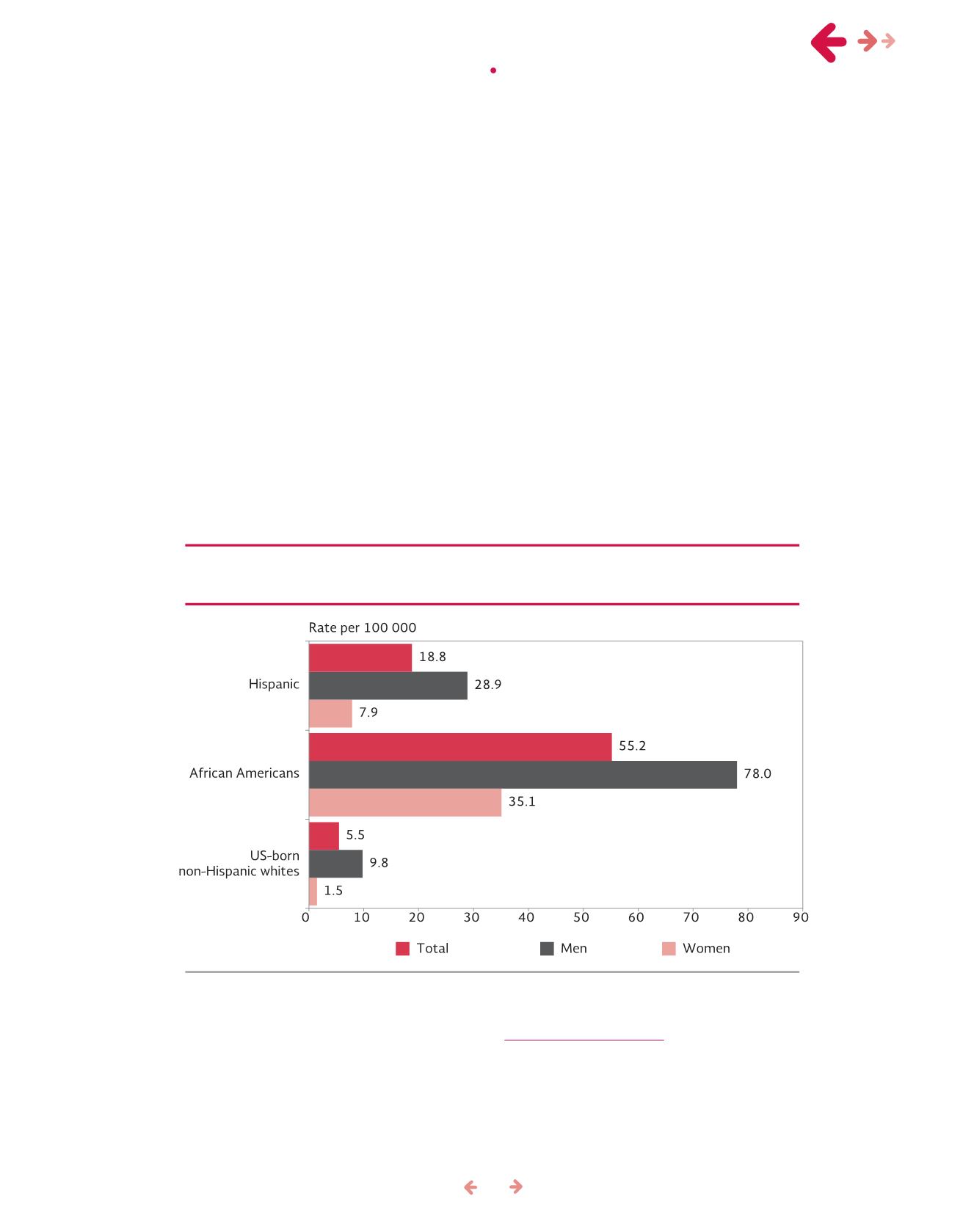
67
TheHispanicpopulationhas higher rates
of detectionof new cases of hivand cervical
cancer thanUS-bornwhites
In2009, theHispanicpopulationdisplayedhigher rates
of new cases of hiv cases per 100 000 persons over
13 years old than that of non-Hispanic whites (18.8
and5.5, respectively). The highest incidence ratewas
amongAfricanAmericans (55.2). An analysis by gen-
der shows thatmen have a higher incidence across all
population groups (Figure 55), although it should be
noted that it is less common for men to have an hiv
test thanwomenas shown in theprevious chapter.
Accordingtothe
NationalHealthcareDisparities
Report
, between 2004 and 2008, theHispanic popu-
lationdisplayed the lowest rateof Pap testswithin the
recommended time frame. This in turn contributes to
higher rates of advanced stages of cervical cancer at
diagnosisamongHispanicwomenover20years (17.1
per 100000persons) (Figure56).
Older adults
Mexican immigrants andAfricanAmericans
age65andover have thehighest rates of
diagnoseddiabetes
It is crucial to know the health conditions faced by
Mexican older adult immigrants, as some are undocu-
mentedandcannotobtainhealthcoverage,whilemany
more liveon inadequate incomes,making itdifficult for
them to seek treatment. Moreover, many immigrant
workers delay preventive and timely care, which in-
creases the likelihoodof diseases at later ages.
2
2
A recent study states that half of short-termMexican migrants in this
agegroupareunknowingly suffering from the illness (Barcelo
etal
., 2012).
Another study indicates that this is directly linked to the period of time
spent in theUnited States, and that a longer stay tends to undermine the
health advantages of immigrants in comparison with US-born population
(LópezandGolden, 2014).
Source: ProducedbyCONAPObasedon theNational Center forHIV, Viral Hepatitis, STD, andTBPrevention (NCHHS-
TP), HIV/AIDSof theAgency forHealthcareResearchandQuality, 2009.
Figure55. Populationover 13years amongnew casesof hiv, bygender andbased
on regionof originandethnicityor race, 2009
chapter i i i •
risk factors and health conditions


